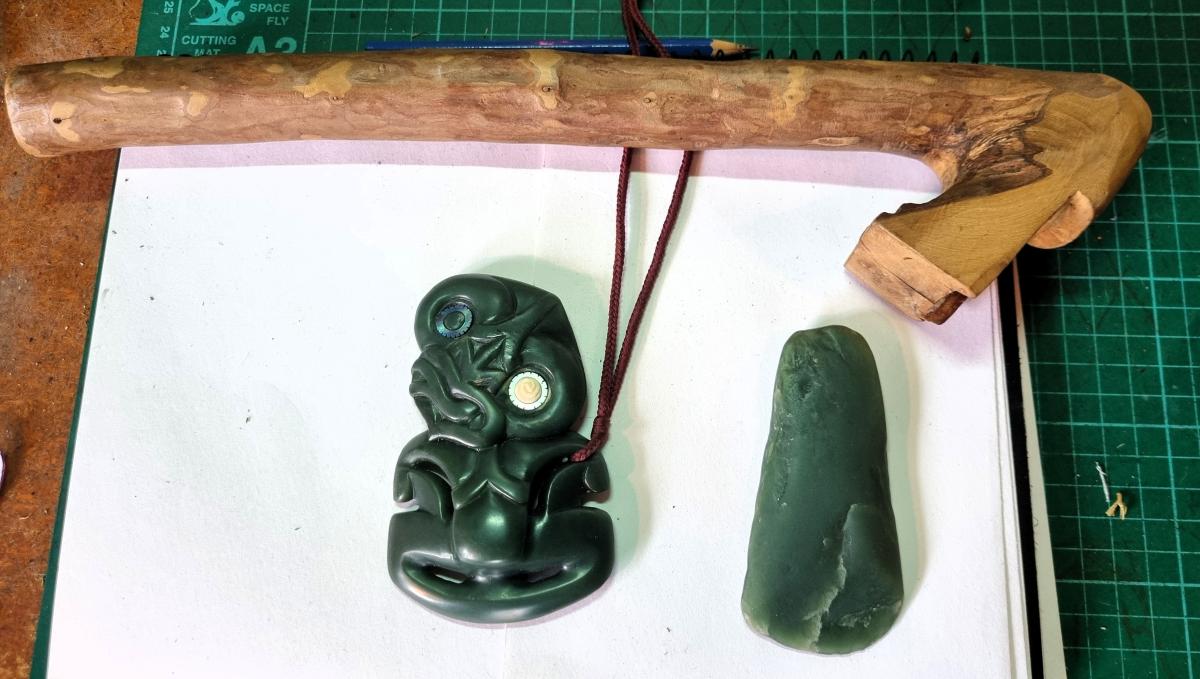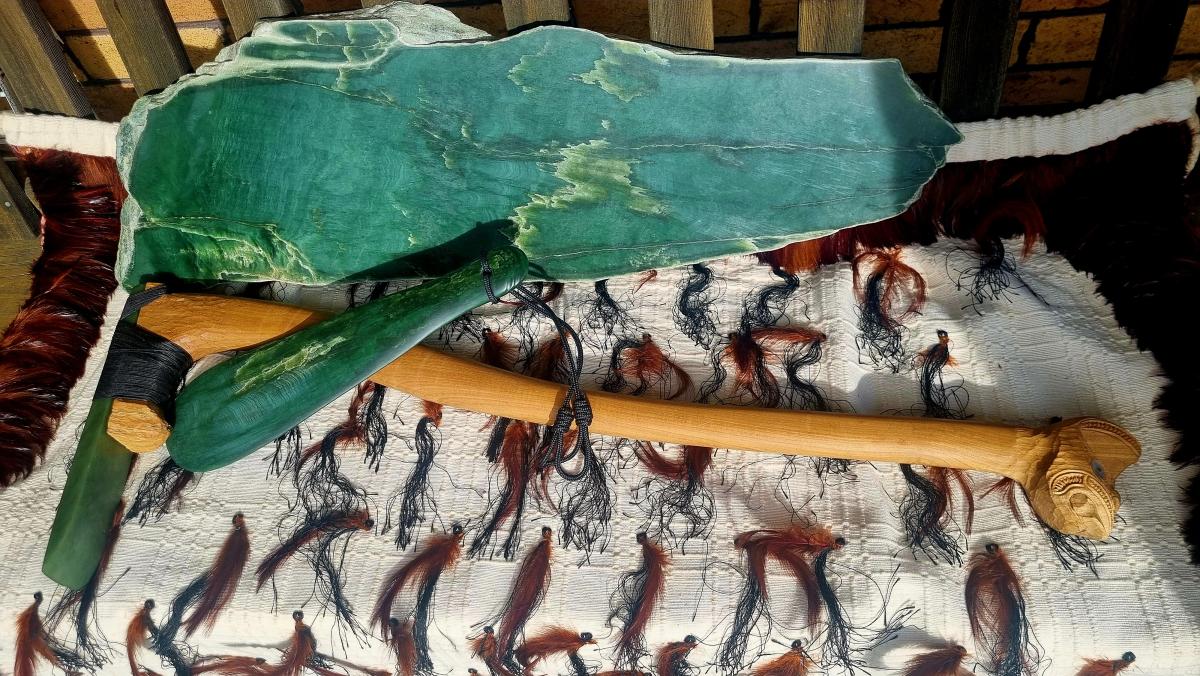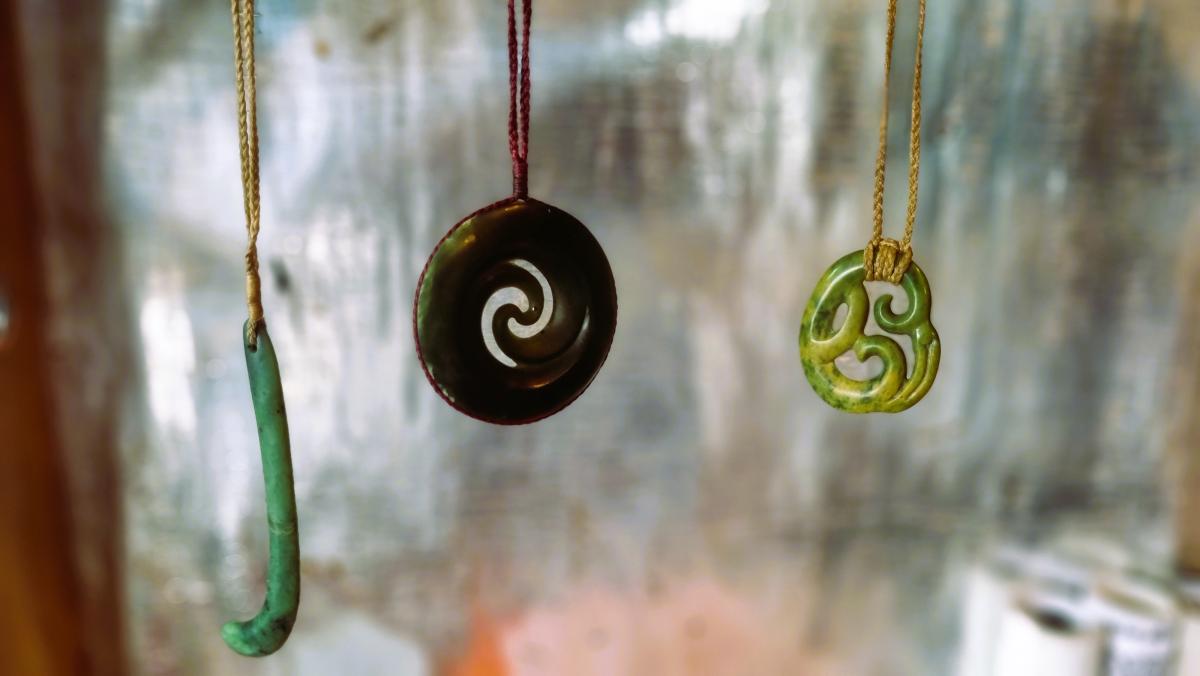In the past, Māori used pounamu mainly for tools, weapons, and important adornments. Because of its strength and toughness, it was ideal for things like toki, chisels, and patu.
As time went on, pounamu became more of a symbol of identity, leadership, and protection. Today, people wear pounamu as jewellery, use it in ceremonies, or display it in homes and schools. Many businesses, buildings and kaupapa may have larger pieces of pounamu that act as mauri stones. Carvers still create traditional forms, but now they also make modern art pieces – all while honouring the traditions of the past.
Pounamu has always been treasured by Māori - but the way it’s used and carved has changed a lot over time.

Pounamu uses have changed a lot over time. Image: LEARNZ.
Traditional uses
Māori traditionally used pounamu mostly for tools, weapons, and prestigious ornaments. Because it is extremely hard and durable, pounamu was perfect for making:
- toki – adzes used for carving wood and building waka
- patu – clubs used in battle
- kōhatu – stones used in daily work or ceremonial roles
- hei tiki and pendants – worn by chiefs and important people as symbols of mana and connection to ancestors.
These items were not just practical – they also held spiritual and cultural importance. They were often passed down through generations and treated as taonga.

Māori traditionally used pounamu mostly for tools, weapons, and prestigious ornaments. Image: LEARNZ.
Modern uses
Today, pounamu is still considered sacred and special, but its uses have expanded:
- People wear pounamu jewellery to connect with their culture, identity, or as a symbol of protection.
- Pounamu is given as a gift to mark milestones – like graduations, births, or significant journeys.
- Artists and carvers create both traditional and modern designs that reflect Māori narratives, family history, or personal meaning.
- Some carvers also make large sculptures or contemporary art that explore new ideas while still respecting tikanga.

Today, pounamu is often made into jewellery. Image: LEARNZ.
Māori kupu | key words
whakairo | to carve/carving
toki | adze
patu | short-handled club
kōhatu | stone
hei tiki | pendant depicting human image
waka | canoe
Sources:



